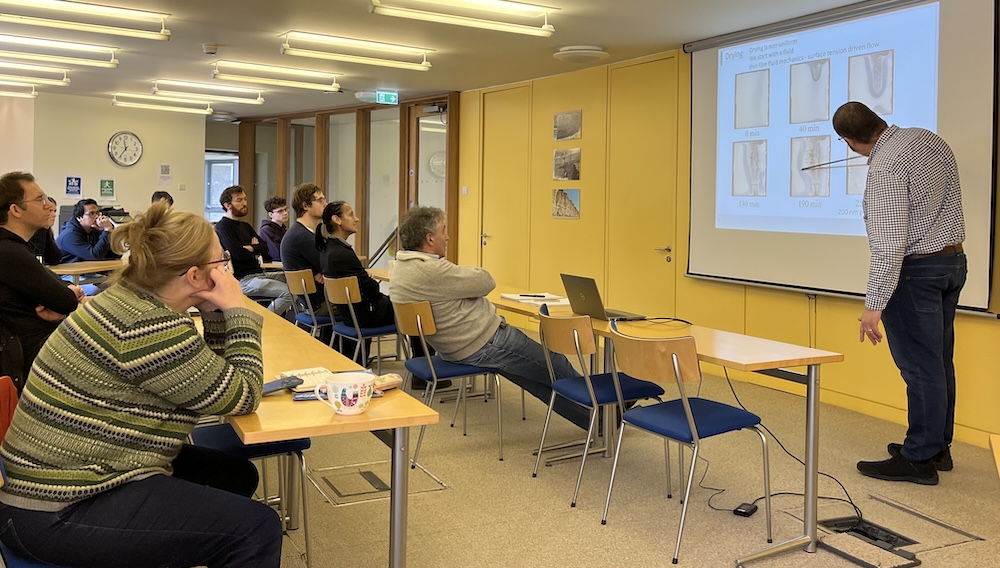Professor Alex Routh has long been interested in colloidal suspensions, and today he told us about some of his recent work in the field.
When a pool of fluid containing a suspension of particles is left to dry, the liquid slowly evaporates and the particles consolidate into a solid, which eventually cracks. We can see examples of such cracking in dry river beds, salt flats, and even the surface of paintings on panel.
Professor Routh showed us the results of some experiments, in which a suspension of particles in water was left to dry under controlled conditions in the laboratory. Video recordings of the experiments show cracks developing on the surface over time. The length and the spacing between the cracks are controlled by the film thickness, the size of the particles, and the rate of evaporation.
Human blood is also a suspension of blood cells in fluid, and just like in the experiments, when a drop of blood is left to dry, it slowly develops cracks on its surface. The properties of the cracks depend on the the properties of the blood cells: this opens up the intriguing possibility that the presence of some blood disorder or of a disease such as anemia might be flagged by observing the pattern of cracks developing on the surface of a drying blood drop. Work on this is ongoing, and we look forward to hearing more soon!
